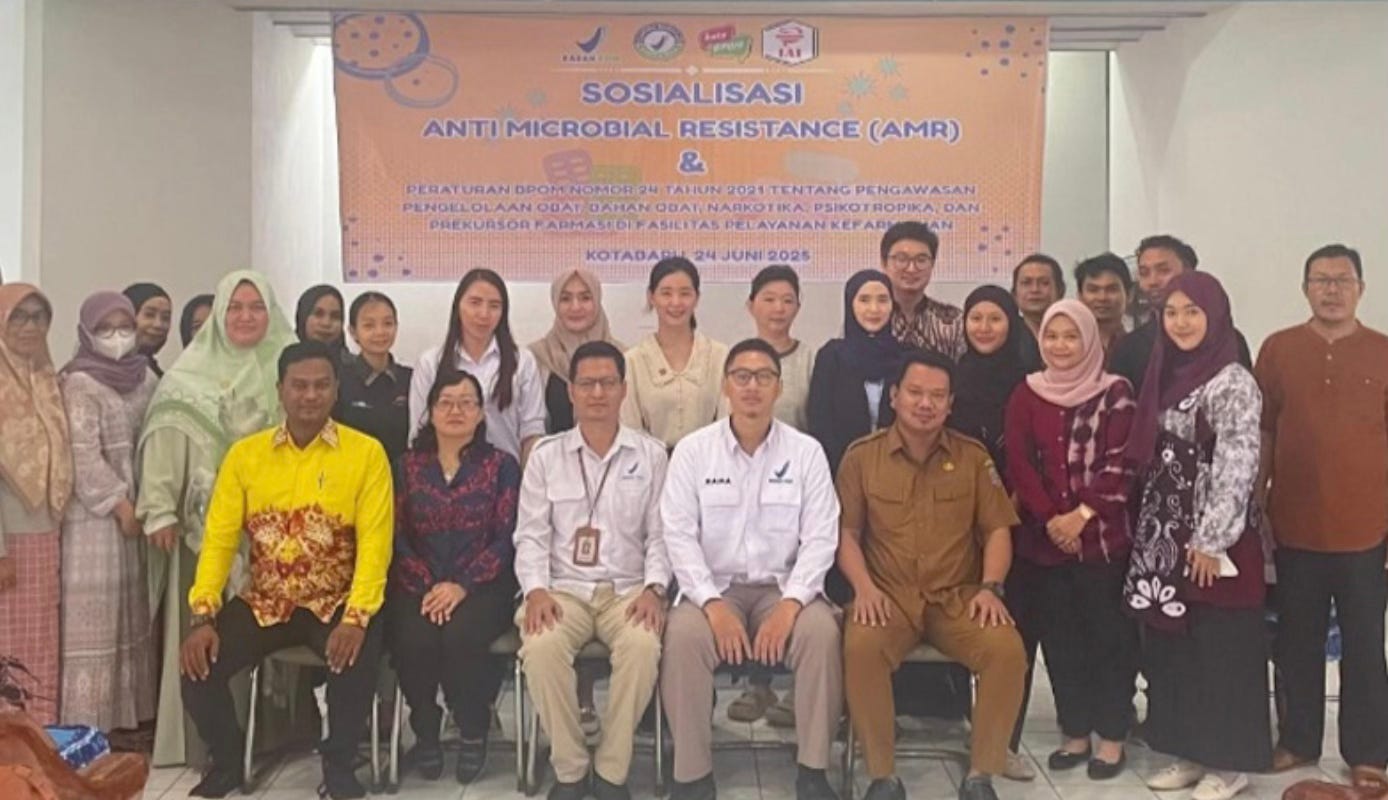AMR Indo News, w27 2025
Indonesia intensifies AMR awareness campaigns, with BPOM and universities leading public education while warnings on misuse of antibiotics continue.
A summary of AMR in Indonesian press
Media reporting over the past week in Indonesia has centered on intensifying public health campaigns, increasing regulatory messaging, and growing urgency from health professionals regarding the threat of antimicrobial resistance (AMR). Public awareness efforts and regulatory engagement appear to be at the forefront, while academic and community-based actors are contributing to educational outreach. No new pharmaceutical breakthroughs or clinical trials were highlighted this week.
Policy and Regulatory Actions
BBPOM Jakarta, along with BPOM and affiliated agencies, played a prominent role in media narratives this week, launching campaigns that urge the public to avoid the indiscriminate use of antibiotics. Media sources such as Berita Jakarta and Antara News report that officials warned of growing resistance due to self-medication and emphasized the importance of adhering to prescription-only use of antimicrobial drugs. Additionally, Tribrata News cited BPOM statements that AMR poses a national and global health threat requiring immediate regulatory vigilance.
Public Health Concerns and Awareness
There was a significant focus on public education. Events such as seminars organized by the World Organization for Animal Health (WOAH) in Medan and campaigns led by student bodies like BEM Kabamafar and the Pharmacy Program at Universitas Muslim Indonesia (UMI) highlighted the spread of awareness at the grassroots level. Articles from Tribun Medan and Berita Bersatu noted that youth and student engagement has become an increasingly important part of AMR mitigation. Meanwhile, several platforms such as Mimbar Umum and Analisa Daily emphasized the role of journalists in combating misinformation and encouraging proper antibiotic use.
Pharmaceutical and Clinical Interventions
No new pharmaceutical interventions or clinical trials were reported in the media this week. However, pharmacists and medical professionals continued to issue strong warnings about the risks of non-prescribed antibiotic consumption, particularly for urinary tract infections. Outlets such as Kompas Health and Navigasi.co.id documented expert commentary on the rising misuse of antibiotics and its links to worsening AMR outcomes.
Research and Technological Advances
Scientific reporting included insights into an AMR-focused study by Universitas Airlangga examining DNA gyrase suppression mechanisms in essential oils, as reported by Indowarta. While still early-stage, the study highlights ongoing molecular-level research efforts in Indonesia. Meanwhile, public health platforms emphasized the importance of pharmacological literacy and called for broader research investment to counter AMR threats, though no new government-funded research initiatives were documented this week.
AMR in International Press
Pharmaceutical Enforcement and Regulatory Measures
A large-scale operation coordinated by INTERPOL and local health authorities, including Singapore’s Health Sciences Authority (HSA), seized over $83 million in illegal pharmaceutical products globally. The operation targeted counterfeit and unlicensed antibiotics and highlighted vulnerabilities in online health product sales. The HSA issued warnings to over 700 sellers in Singapore alone, underscoring enforcement efforts to curb unregulated antimicrobial distribution. Concurrently, several public health agencies reiterated the risks of antibiotic misuse, reinforcing the need for tighter international regulatory alignment.
Medical and Technological Interventions
Research from the University of Auckland showcased advancements in tuberculosis diagnostics, using DNA-based detection tools capable of identifying drug-resistant strains more quickly. The study, funded through international collaboration, demonstrated promising implementation results in high-burden areas. Separately, a global initiative involving drone-supported environmental surveillance in parts of Africa was credited with identifying malaria and bacterial hotspots, offering a potential model for real-time AMR data collection and intervention deployment.
Food Supply and Agricultural Contributions to AMR
Multiple studies released this week strengthened the evidence linking antibiotic overuse in poultry and aquaculture to the emergence of resistant strains affecting human health. A study from the University of Georgia revealed significant AMR traces in imported shrimp, prompting renewed calls for stricter global regulations on antibiotic use in food production. The Poultry Site and other agriculture-focused outlets detailed the human health risks and policy gaps in current oversight practices.
Global Health and Policy Coordination
Reports indicated a troubling decline in funding for global HIV and AMR-related research following reduced U.S. commitments. Analysts from Portside and The New York Times cited delayed diagnostics and treatment rollout in low- and middle-income countries. Simultaneously, the WHO issued updated guidance on safe water systems to reduce transmission of resistant pathogens in post-disaster contexts. The guidance emphasizes the role of sanitation infrastructure in preventing AMR spread, particularly in refugee and crisis zones.
Novel Treatments for AMR
Regulatory Approvals and Deployment
ABL Diagnostics announced the commercial release of its CE-marked (European Union-approved) molecular diagnostic test for identifying AMR gene profiles in bloodstream infections. The test, which uses a rapid multiplex PCR platform, was developed in collaboration with European clinical partners and has begun deployment in France and Germany. The technology is designed to assist clinicians in selecting appropriate antibiotics more quickly, thereby minimizing ineffective prescriptions.
Separately, the Turkish Council of Scientific and Technological Research reported successful clinical deployment of a newly developed antibiotic compound, TRB-221, specifically targeting resistant Acinetobacter baumannii strains. Approved by the Turkish Medicines and Medical Devices Agency, the compound is being introduced across tertiary hospitals in Turkey following a multi-site trial.
Clinical Significance
Both treatments have demonstrated effectiveness against pathogens listed as critical-priority by WHO. The diagnostic tool shortens time to targeted therapy, potentially improving patient outcomes and reducing resistance selection. Meanwhile, TRB-221 offers a therapeutic alternative in intensive care settings where standard antibiotics have failed, addressing an urgent clinical gap.
This week on Youtube
An Indonesian student project on AMR
The objective of this substack is to support awareness about the subject of AMR for healthcare professionals and interested audiences.
This newsletter is based on articles in the press, supplied by NewsMachine, tools for media monitoring worldwide.




